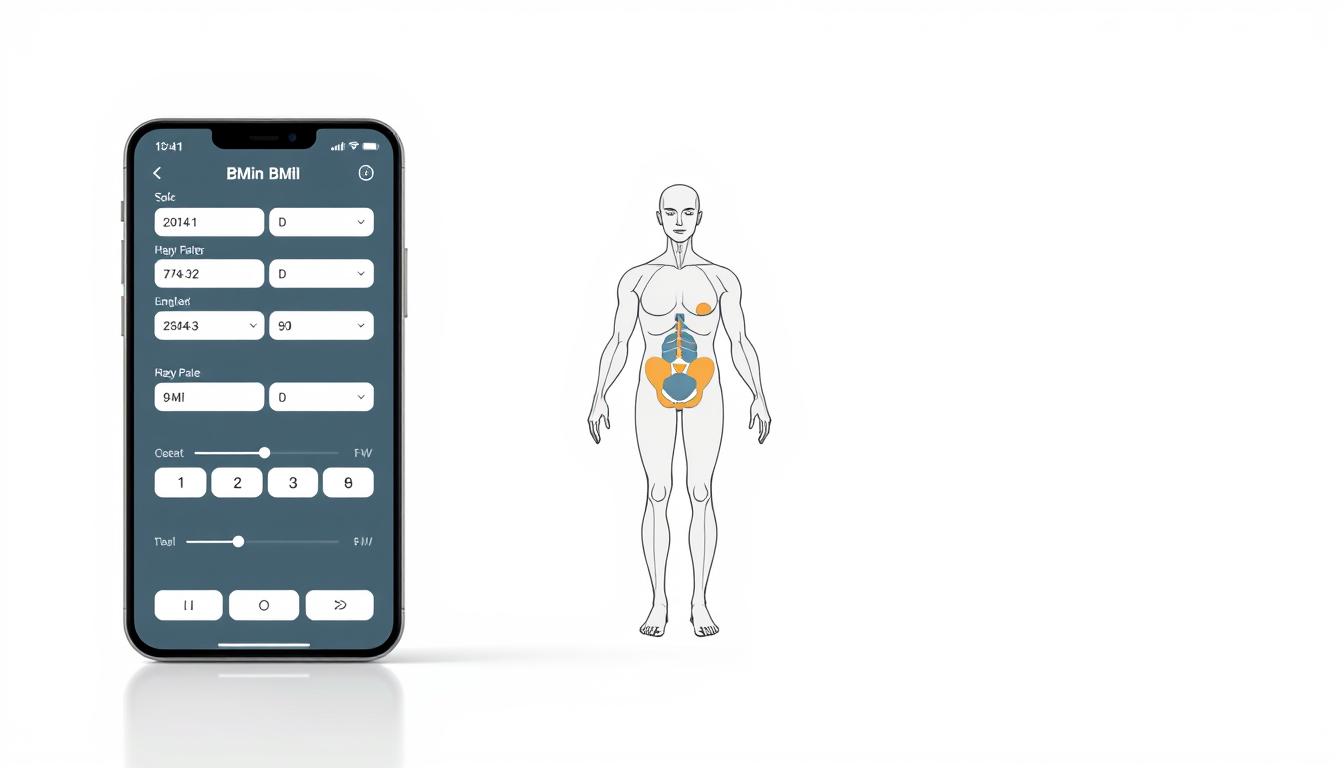“The greatest wealth is health,” as the ancient Roman poet Virgil once said. In today’s world, maintaining a healthy body weight is crucial for overall well-being. Body Mass Index (BMI) is a widely used tool to identify potential weight problems. It is calculated based on a person’s weight and height.
Using a weight distribution calculator can provide valuable insights into body composition, helping individuals make informed decisions about their health management. Different fat distribution patterns carry different health risks.
Understanding these risks is essential for effective health improvement. Modern calculators incorporate various metrics, including BMI, to assess obesity risk comprehensively.
Key Takeaways
- Body Mass Index (BMI) is a screening tool to identify potential weight problems.
- A weight distribution calculator provides insights into body composition.
- Different fat distribution patterns carry different health risks.
- Understanding these risks is crucial for effective health management.
- Modern calculators use various metrics to assess obesity risk comprehensively.
Understanding Weight Distribution and Obesity
Understanding weight distribution in the context of obesity is vital for assessing health risks and developing effective management strategies. We need to consider various factors that influence how body weight is distributed.
What is Obesity and Why It Matters
Obesity is a medical condition characterized by excess body fat, which can negatively affect health. It is determined by factors such as body composition and body mass index (BMI). Understanding obesity is crucial because it is linked to various health issues, including diabetes, heart disease, and certain types of cancer.
The Role of Weight Distribution in Health Assessment
Weight distribution is a critical factor in health assessments. It is influenced by genetic factors, sex hormones, and lifestyle choices. For instance, fat distribution patterns vary between individuals, with males typically storing fat around the abdomen and females around the hips and thighs.
| Body Type | Fat Distribution Pattern | Health Risk |
|---|---|---|
| Ectomorph | Lean and thin | Lower risk |
| Mesomorph | Moderate fat, muscular | Moderate risk |
| Endomorph | Higher body fat | Higher risk |
Different Body Types and Fat Distribution Patterns
Human bodies are categorized into different somatotypes, including ectomorph, mesomorph, and endomorph. Each type has distinct characteristics and fat distribution patterns. For example, individuals with an android or “apple-shaped” body type tend to store fat around the abdominal area, which is associated with a higher risk of cardiometabolic diseases.
Types of Weight Distribution Calculators for Obesity
Several weight distribution calculators are available to help assess obesity accurately. These calculators provide valuable insights into an individual’s body composition and help identify potential health risks associated with excess weight.
Body Mass Index (BMI) Calculator
The BMI Calculator is one of the most commonly used tools to assess weight status. It calculates BMI by dividing a person’s weight in kilograms by their height in meters squared. You can use our BMI calculator to determine your BMI instantly.
BMI is a widely used indicator because it provides a simple and non-invasive way to categorize individuals into different weight categories, such as underweight, normal weight, overweight, and obese.
Waist-to-Hip Ratio (WHR) Calculator
The Waist-to-Hip Ratio (WHR) Calculator assesses body fat distribution by comparing waist circumference to hip circumference. This measurement is crucial because it indicates the risk of health problems associated with excess fat around the waist.
A higher WHR is linked to a greater risk of developing conditions like heart disease and diabetes.
Waist-to-Height Ratio (WtHR) Calculator
The Waist-to-Height Ratio (WtHR) Calculator is another useful tool that correlates waist circumference with height. It is considered a good indicator of health risks associated with central obesity.
Body Fat Percentage Calculator
Body Fat Percentage Calculators provide a direct assessment of obesity by measuring the proportion of total body mass that consists of fat tissue. This includes distinguishing between essential fat and storage fat.
Unlike BMI, body fat percentage directly measures adiposity. Healthy ranges typically considered are 10-20% for men and 18-28% for women, though these vary by age and fitness level. For more information on body fat percentage, you can visit Medical News Today.
How to Use Weight Distribution Calculators Effectively
To get the most out of weight distribution calculators, we need to understand how to use them accurately. These tools can provide valuable insights into our body composition and overall health, but only if used correctly.
Taking Accurate Body Measurements
Taking accurate body measurements is crucial for obtaining reliable results from weight distribution calculators. We should use a flexible tape measure to record our waist and hip circumference. It’s essential to measure at the correct anatomical landmarks and maintain consistent measurement techniques.
Inputting Data and Understanding Results
When inputting data into weight distribution calculators, we must ensure that the information is accurate and up-to-date. Understanding the results requires considering various health factors, including our obesity level and other health conditions. For instance, a high waist-to-hip ratio may indicate an increased risk of health complications.
Tracking Changes Over Time
Weight distribution calculators can be useful for tracking changes in our body composition over time. By regularly monitoring our measurements and calculator results, we can assess the effectiveness of our lifestyle interventions and make informed decisions about our health.
When to Consult Healthcare Professionals
While weight distribution calculators provide valuable information, they should complement rather than replace professional medical advice. We should consult a healthcare professional if our BMI exceeds 30, or if we notice rapid, unexplained changes in weight or body measurements. Healthcare professionals can provide personalized interpretation of our weight distribution data in the context of our overall health, family history, and other risk factors that calculators cannot account for.
- Consult a healthcare professional if your waist-to-hip ratio is above 1.0 for men or 0.85 for women.
- Seek medical guidance if you notice rapid, unexplained changes in weight or body measurements.
- Healthcare professionals can provide personalized interpretation of your weight distribution data.
Limitations and Considerations for Weight Distribution Analysis
Understanding the limitations of weight distribution calculators is essential for interpreting results accurately and making informed health choices. While these tools provide valuable insights into body composition and health metrics, they have several inherent limitations.
One of the primary limitations is the inability of calculators like BMI to distinguish between muscle mass and fat mass. This can lead to misleading results, particularly for athletes or individuals with higher muscle density. For instance, high-performance athletes may have a high BMI due to their muscle mass, not because they are overweight.
Age and sex significantly impact healthy weight ranges and body composition norms. For children, the Centers for Disease Control and Prevention recommends using age and sex-specific BMI percentile charts, as their body composition changes naturally throughout development. Moreover, ethnic and racial variations in body composition and fat distribution patterns are not accounted for in standard calculators.
Individual factors such as bone density, muscle mass, activity level, and metabolic health also influence what constitutes a healthy weight range for a specific person. This highlights the importance of personalized assessment and considering multiple health metrics, including blood pressure, cholesterol levels, and physical fitness.
Lifestyle factors, including physical activity level, dietary patterns, and stress management, often have more significant impacts on health outcomes than weight alone. Therefore, a holistic approach to health improvement is crucial. Medical conditions such as lymphedema, lipedema, and certain endocrine disorders can also affect weight distribution in ways that standard calculators cannot account for.
Despite these limitations, tracking changes in multiple weight distribution metrics over time can provide valuable insights into health trends when interpreted within the context of overall health status and lifestyle factors. By understanding these limitations and considering a comprehensive view of health, individuals can make more informed decisions about their well-being.


